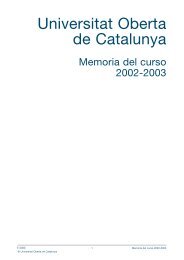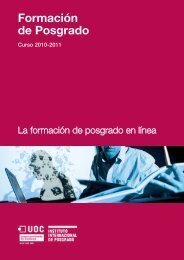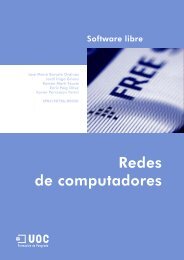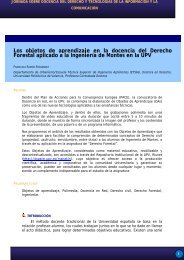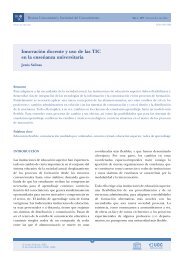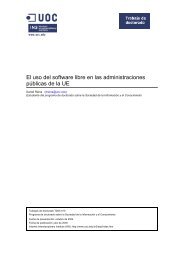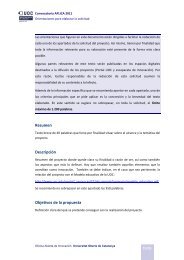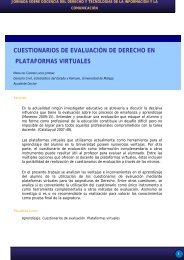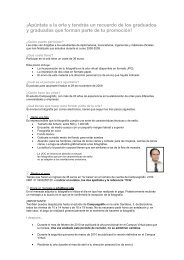e-governance and citizen information - Universitat Oberta de ...
e-governance and citizen information - Universitat Oberta de ...
e-governance and citizen information - Universitat Oberta de ...
Create successful ePaper yourself
Turn your PDF publications into a flip-book with our unique Google optimized e-Paper software.
E-<strong>governance</strong> <strong>and</strong> Citizen Information 34 Theoretical Framework. The Network Administrationsimply address the reduction of costs generated by the path of conventional transactions toelectronic transactions, the figures offered by some authors are spectacular. For example,Fountain (2001a), talks about 50% savings in simple transactions <strong>and</strong> even higher percentagesin more complex transactions.Similarly, the electronic provision of services has a clear effect on internal efficiency <strong>and</strong>the external efficacy of services. There is an impact on internal efficiency because of thesimplification in procedures <strong>and</strong> the speeding up of administrative processes (Layne <strong>and</strong>Lee, 2001) <strong>and</strong> because there is a great reduction in costs (Fountain, 2001) – eliminationof the use of paper, simplification of tasks <strong>and</strong> savings in different expenses that generateface-to-face attention. There is also an impact on the external efficacy of services becausethere is an improvement in the distribution of services, since they use more channels <strong>and</strong>greatly exp<strong>and</strong> the working hours <strong>and</strong> geographical scope of attention <strong>and</strong>, as a result,provi<strong>de</strong> a much broa<strong>de</strong>r access. In any case, other studies show that the cost-benefit analyses<strong>de</strong>rived from digitisation are minor <strong>and</strong> even exceptional in these innovation processes (Cohen<strong>and</strong> Eimicke, 2001). In addition, he mentions that the benefits do not feature as criteria for therunning of the public sector <strong>and</strong> this hin<strong>de</strong>rs the establishment of efficiency measurement criteria(Dreschler, 2005).2.3.4. Networks of ActorsActors <strong>and</strong> the relationship networks established to implement technological innovationprojects are vital to un<strong>de</strong>rst<strong>and</strong> the results of these processes. We are talking about complexnetworks that count not only on the participation of the Administration <strong>and</strong> technology provi<strong>de</strong>rs.In turn, there is a wi<strong>de</strong> range of agents that are involved in these projects: from thedifferent <strong>de</strong>partments to the administrative units that <strong>de</strong>liver the services, politicians, civilservants, actors from the private sector <strong>and</strong> other social institutions.Conceptually, the framework of e-<strong>governance</strong> provi<strong>de</strong>s elements to un<strong>de</strong>rst<strong>and</strong> these networks.Thus, it is seen as a concept to overcome a conception of government that could act with greaterautonomy. The concept of <strong>governance</strong> encompasses the norms, processes <strong>and</strong> competencesthat have an impact on the exercise of power from the supranational level <strong>and</strong>, especially,from the point of view of opening the participation grounds to actors from thepublic <strong>and</strong> private sectors, the political sphere <strong>and</strong> civil society.E-Governance reveals the administration's difficulties in the management of change withthe analysis of the different actors' influence on the performance of technological innovationprojects. To consi<strong>de</strong>r these elements, we will summarise a) the concept of <strong>governance</strong>,http://www.uoc.edu/in3/pic




